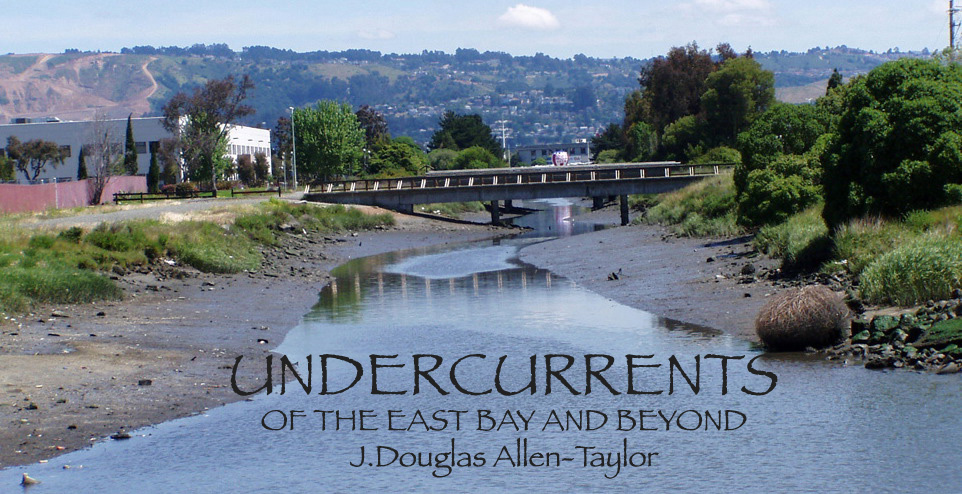|
|
MAKING THE BART CONNECTIONS
May 21, 2009
The battle over Bay Area Rapid Transit’s Oakland Airport Connector gives us a rare chance to look into the heart of our public transportation policies and priorities, so long as we are able to clear the inevitable political hyperbole out of the way.
BART—if you missed the news—is proposing building a $550 million automated overhead transit line to connect its Coliseum Station with the Oakland Airport, making it possible for patrons to use BART to get directly to the airport without having to transfer down to surface street transportation.
Is that a good project for BART to spend $550 million on? We’ll get to that question in a moment. But first, the hyperbole.
In a BART PowerPoint presentation handout given out at the recent meeting where the BART Board of Directors gave the latest go-ahead to the project, the agency included a list of reasons why the airport connector would be a benefit (short trip time, extremely reliable, easily expandable) along with a satellite picture of the area surrounding the Coliseum Station and the Oakland Airport. Superimposed on the satellite picture were close-up photos of four developments within the area: the Lions Creek Crossing residential development (formerly Coliseum Gardens) at 66th and San Leandro Street and the Hegenberger Gateway Shopping Center, both already in existence, along with the proposed Coliseum Transit Village scheduled to go up just east of the Coliseum Station, as well as the proposed Coliseum Towne Center, a Hegenberger Road retail center scheduled to be put in just south of the Coliseum athletic complex.
Although the BART handout gave no reason for picturing these four particular developments in its Airport Connector PowerPoint, they are there, presumably, because BART wants us to believe that the connector will provide some benefit to them.
In his presentation to the meeting meeting, Oakland City Councilmember Larry Reid—who represents Deep East Oakland and the Coliseum area—was more explicit while expressing his support for the connector.
“We’ve been in discussions with the developer of building a 400-plus room hotel on Hegenberger with a stop adjacent to that hotel, doubling the size of our present convention center that we have in downtown Oakland,” Mr. Reid said. “We are partnering with [BART] to build 400-plus units of housing on your parking lot to go right next to the Oakland Housing Authority development at Lyons Creek, which is almost completed.” Reid also mentioned housing developments currently under construction at the site of the former Tassafaronga Housing Project on 85th Avenue and another one on 98th Avenue and San Leandro Street, some 12 and 22 blocks from the Coliseum BART Station, respectively.
“There’s a lot riding on this project,” the Councilmember continued. “If you want to help us to change this city, and even more important, by changing this community, you can do so by doing what we promised the voters when we passed [transportation] Measure B, by building this airport connector.”
Mr. Reid then called the airport connector “one of the most important projects in this city’s history and in this region.”
Given that this is a city and region that built Lake Merritt, the regional park system, the Golden Gate and San Francisco-Oakland Bay bridges, BART, the Nimitz and the MacArthur freeways, the Oakland-Alameda County Coliseum complex, and the Oakland Airport—just for starters—it’s hard to see how a 3.2 mile elevated people-and-baggage mover between the BART station and the airport is something to really get excited about. But like most politicians, Mr. Reid is entitled to his rhetoric.
But one struggles to understand exactly what benefits the airport connector would provide to the residential and commercial district surrounding the planned connector route, as Mr. Reid suggests.
Currently BART does not have an intermediary stop penciled in between the Coliseum Station and the airport, though they have suggested that one could go in front of the proposed hotel and convention center, when and if it is built.
Forgive us if we are skeptical, however. Oakland has a bit of a history of going ahead with major development projects on the hope that a hotel will follow. Some of us are old enough to remember—during the Jerry Brown Administration—when Oakland tore down the successful Jack London Village commercial center because someone was going to put a four star—or was it five star?—hotel in its place. No hotel was ever built, a commercial district was lost that could have served the lofts then being built in the warehouse district, and the spot where the Jack London Village used to be remains a vacant lot.
But a yet-to-be-planned intermediary stop for a yet-to-be-planned major Hegenberger Road hotel and convention center aside, how, exactly, would the proposed airport connector benefit the other housing and retail developments in Mr. Reid’s and BART’s presentations and representations? The Hegenberger Gateway Shopping Center is closer to the current Coliseum Station than they would be to the proposed Oakland Airport station of the airport connector, so it is inconceivable that the connector—which is projected to cost another $6 per ride for patrons above and beyond the original BART ticket—would somehow attract more customers to that location. The same is true for the residents of the various existing and proposed housing projects in the area. If they want to ride BART to anywhere but the airport, they can already board it at the nearby Coliseum Station. The airport connector provides residents surrounding the Coliseum Station with no service additional to what they already have.
But this is the sort of bone that is usually thrown out to traditionally-neglected communities when agencies and politicians want support for some project or other. It only seems attractive until you start searching for any stray scraps of actual meat. One simply wants to shout out that if you think the airport connector is important to build, guys, go ahead and build it, but don’t pretend it will do the neighborhood any good.
The same thing, by the way, goes for the inevitable promise of jobs to the local community when some major project is planned for some neglected neighborhood. Since it is probable that workers living in the Fremont area will be working on the BART Airport Connector, when and if it is built, so why doesn't BART recruit workers from East Oakland to work on the district's Warm Springs extension?
Anyways, this scrambling around to show that BART activity in the Coliseum Station area will somehow provide some benefit to the neighboring district picks at the old scab that BART was never designed to benefit the Elmhurst-Deep East Oakland area when it was originally built. The BART Coliseum stop was built at that location for one purpose—which you can guess at by the station name itself—to get riders to and from the Oakland-Alameda County Coliseum Complex. Had the purpose been to benefit the surrounding community, the line would have been built—underground, one would hope—along International Boulevard (then E. 14th Street), which was both the area’s business thoroughfare and near the center-line of the area’s population. While a BART stop at, say, Hegenberger and International might not have made the commercial core on that thoroughfare boom in the same way the Fruitvale District has boomed (Port Commissioner Margaret Gordon told the BART Board members last week that the overground BART lines along 7th Street helped kill that area’s commercial district), but without the BART stop, the once-bustling upper end of International has withered into a jumble of liquor stores, nail shops, and auto repair shops, with prostitutes and drug dealers plying their trades in between.
That returns us to the original question: is the airport connector a good project for BART to build?
That’s a tough and complicated question.
If we were starting from scratch, with $550 million to spend—free and clear—on any given BART-related transportation project in Oakland, the answer would probably be no. Eventually, we are going to benefit from seamless connections between BART and the other public transportation modes in the area—including AmTrak—but right now, I would not make that my top priority. There is already adequate public transportation between BART and the Oakland airport—via the AirBART shuttles—and there are more pressing needs.
As dysfunctional as BART is as an inter-city (as opposed to between-city) transportation mode inside Oakland, it is the spine of our public transportation system. If I had $550 million free and clear to spend on public transportation, I’d use part of it to try to find ways to funnel passengers—via AC Transit—into BART. This would mean setting up AC Transit shuttles or, in some cases, rapid lines between the hill communities and commercial districts and BART. I’d also try to fund some form of AC Transit’s Bus Rapid Transit (BRT), not along its current planned route of Telegraph Avenue, which seems too disruptive of that smaller artery, but along the much-larger San Pablo Avenue, where it makes more sense. I’d see BART and AC Transit as symbiotic systems, rather than competing entities, and would try to use the money to lay out a public transportation grid that would easily connect all of Oakland’s commercial areas to a rapid line, be it BART of the bus. That would not solve all of our public transportation problems, which are caused in part because we built the modern East Bay on an automobile model rather than a public transportation model, but it would be a step in the right direction.
But, of course, we’re not starting from scratch with $550 million for East Bay transportation.
While some of the money might be available to BART—or to AC Transit—with our without the airport connector, at least $70 million is tied to the federal recovery act, which is intended to put people to work immediately, and which, therefore, must be spent on labor-intensive projects that are ready to go. BART’s airport connector meets that criteria.
That seems a crazy way to do business—spending money on a public project not because it’s the best project, but because it’s the project that happens to be standing at the head of the line, ready to go—and it’s one of the reasons why our conservative friends complain so much about Washington using its financial muscle to set local policy.
If the proposed $550 million—or most of it—can be transferred to another, more logical, more functional local transportation project that can immediately put people back to work, then BART should reconsider the airport connector. If there’s no other way to spend the money in our area, then the connector ought to be built. It will have its functions, even if it’s not the most necessary project BART can work on.
Meanwhile, we’ve got our own work set out for us, to re-orient our local transportation policies—including BART, AC Transit, and the cities they serve—into something that makes more sense for us, and our future. If that’s what comes out of the airport connector fight, it will be a good outcome.
|

